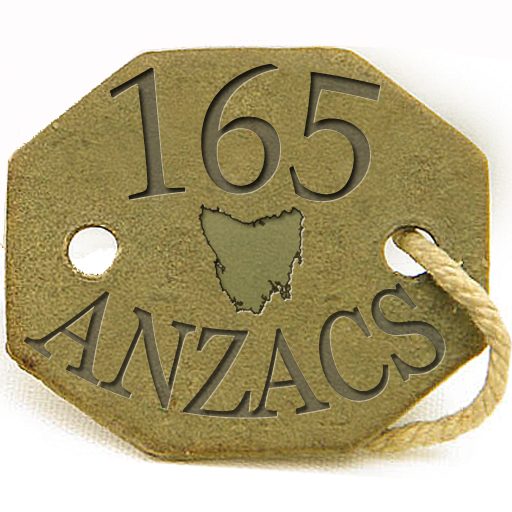 The Holy Trinity Church World War One Memorial plaque contains the names of both those killed in the war and those who enlisted but returned. At first you may think this seems natural. Why wouldn’t they put the names of all the soldiers on it?You may think this until you find out that in all other countries involved on the allied side such as England, Canada, United States, France, Italy and even New Zealand, to put the living, returned soldiers on the same monument as the dead was highly unusual.
The Holy Trinity Church World War One Memorial plaque contains the names of both those killed in the war and those who enlisted but returned. At first you may think this seems natural. Why wouldn’t they put the names of all the soldiers on it?You may think this until you find out that in all other countries involved on the allied side such as England, Canada, United States, France, Italy and even New Zealand, to put the living, returned soldiers on the same monument as the dead was highly unusual.
This is not just the case for the Holy Trinity Church plaque, but all around Australia a large number of the memorials erected listed both the dead and the still living (an obvious exception is the Roll of Honour Wall at the Australian War Memorial). This is in complete contrast to all the other countries who believed that the memorials should only be marked by the names of those who made the supreme sacrifice in the war.
Why do you think there was such a distinction between the way Australians treated their monuments and the way the rest of the world treated theirs? What was the defining difference between Australia and everywhere else?
KS Inglis in ‘Sacred Places’ argues that this difference is conscription. When World War I broke out the Australian voluntary enlistments were more than enough to provide a considerable force for overseas service. However as the war dragged on with its terrible casualties, volunteer replacements became scarcer. The Australian government, as did all other participating governments, considered instigating compulsory military service or conscription.
In Australia the government took this issue to a vote of the people in two separate referendums, one in 1916 and again in 1917. Both times the proposal was defeated; Australians did not want men to be forced to serve overseas in the war. This official defeat was remarkable. The majority of Allied countries used conscription at some point in the war. The Italian army had been based on conscription since its inception in 1865; France introduced universal military service well before the war in 1905, New Zealand and the United Kingdom in 1916, the USA in 1917 and Canada at the beginning of 1918. K S Inglis thought that this refusal to use conscription was what set Australia apart and resulted in its unusual memorials but, though there is some merit to this theory, the situation is a lot more complex than that.
The Australian War Memorial website states that ‘Australia and South Africa were the only participating countries not to introduce conscription during the First World War’ and Aaron Pegram of the Australian War Memorial advises (in an email on this subject with the author) [1] that the South African Overseas Expeditionary Force was entirely voluntary. He also brings into the discussion the fact that there was another significant ‘all-volunteer contributor to the British Empires war effort in the First World War – India’.
So, the voluntary nature of the First AIF was not unique and therefore cannot be the only defining difference that resulted in our unusual attitude to the inclusion of names on our memorials. Probably the different Australian attitude at the time was bound up with other differences as well; South Africa was not homogeneous or unified in its outlook on the war with a significant Afrikaner section who opposed the war, and India was, of course, still under British control until 1947.
Australia was only a recent Federation; most of those who served in World War One would have been born before Federation in 1901. Australia was proud of the martial achievement of its men who stepped up voluntarily for duty with the pride of a new and developing nationalism. Australian politicians, even those who had fought for conscription, were now proudly referring to the fact that the returned soldiers were all volunteers. Australia was still, psychologically, a settler society, with the associated mythos of having to prove its manhood in conflict and struggle, and here was the tangible example of how on the world stage Australians knew their duty, stuck to it willingly and triumphed. The memorials, and the way they were presented, was inevitably bound up with the nation building process that Australia was going through.
KS Inglis in ‘Sacred Places’ page 184 writes of the contemporary view of the time about who should be listed on the memorials; ‘They should all be listed, said a speaker at Cooma, New South Wales in 1923, ’so that all passersby might see who had heard the call of duty and answered it.’’
And so they were.
References
Australian War memorial website. Accessed 5 June 2016
https://www.awm.gov.au/encyclopedia/conscription/ww1/
‘Sacred Places. War memorials in the Australian Landscape.’ KS Inglis assisted by Jan Brazier. Melbourne University Press. 1991.
Email response by Aaron Pegram, Senior Historian to the author of this article on 7 June 2016
‘World War One: The Global Revolution’, Lawrence Sondhaus, Cambridge University Press, 2011
The photograph used is:
Word War 1 conscription billboard – by SJ Marchant
From the LINC website.https://stors.tas.gov.au/PH30-1-5735
Footnotes
[1] In email to author 7 June 2016. Aaron Pegram – Senior Historian – First World War Centenary Projects. Military History Section.
Latest posts by Bradley Wood (see all)
- TASMANIAN BATTALIONS - 23/01/2017
- VOLUNTEERS ALL - 19/12/2016

